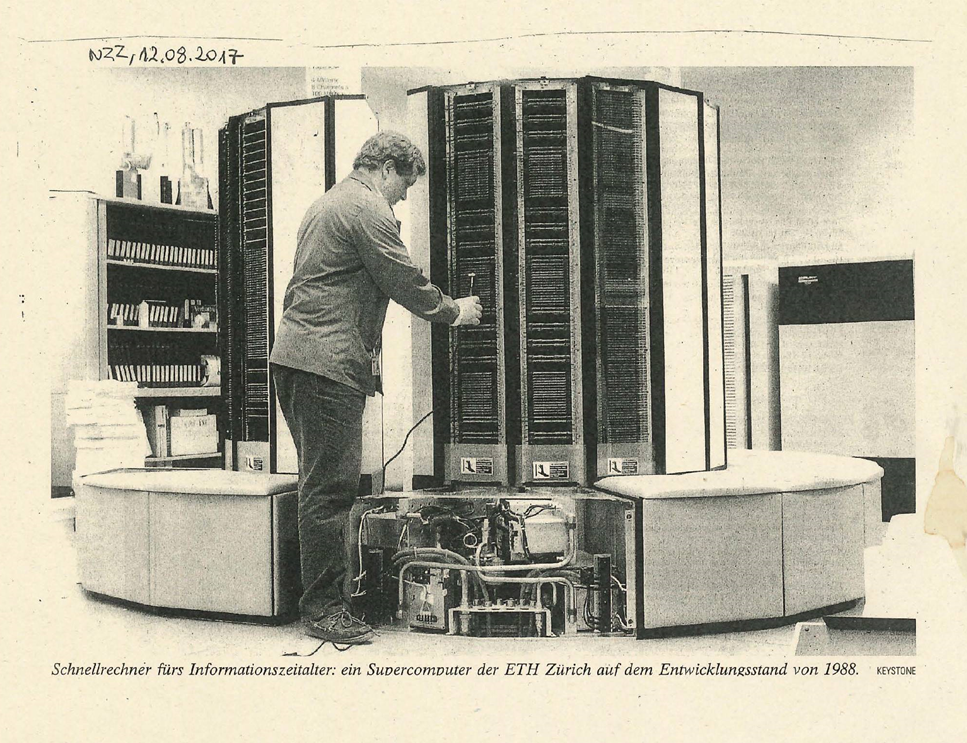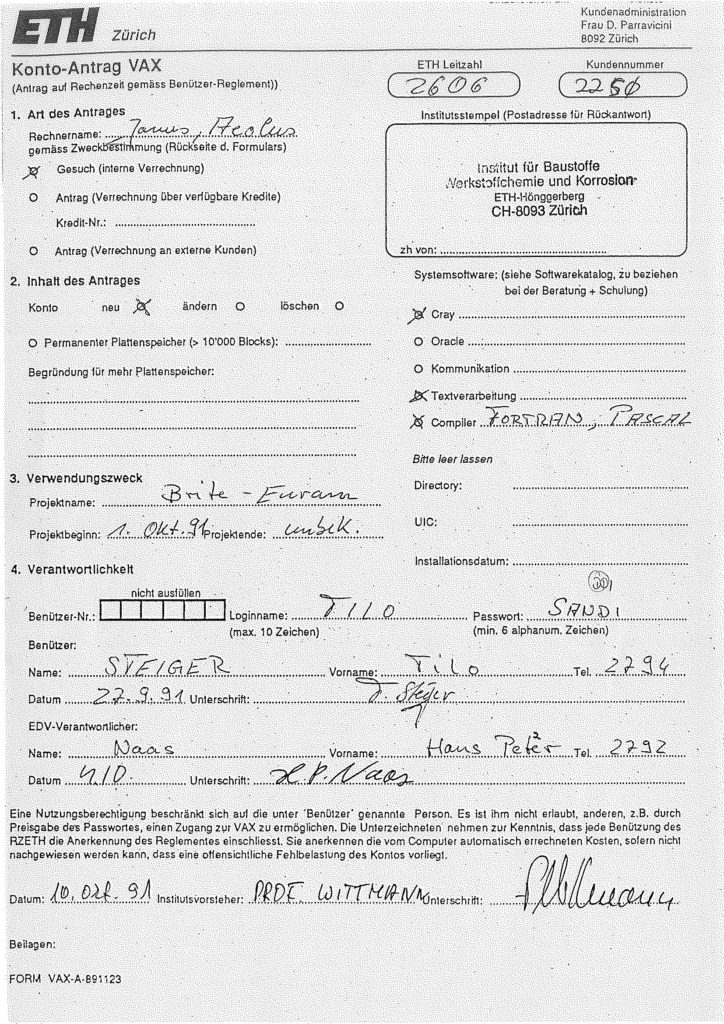Through the ages of technology
The 21st century has a lot to offer – smartphones, satnav devices, fibre broadband and much more. Such technology milestones have also made the organisation within IT Services much easier. Can you still remember what it used to be like to apply for computing time at ETH in writing? Fortunately, this necessary evil has been largely done away with.
This blog post is about changes like this one. To someone like me, who just reached adulthood recently and thus qualifies as a digital native, modern technology is an ordinary part of life. When I listen to stories from the many years before my time, I begin to understand that just a few years ago, technology was still a luxury asset that only few were able to benefit from. Tilo Steiger (Group Manager Storage, ITS SD), Fabio Consani (Group Manager Portfolio Management, ITS PPF) and Jürgen Winkelmann (Head of System Services, ITS SD) helped me to understand what things were like in the fledgling years of IT Services and alerted me to the many changes that have occurred in the field of technology.

This is the second part of the ITS story. To learn more about the ITS logo, go to the first part.
In the beginning was the computer…
We all have this typical picture of an office job. A lone clerk, working amongst scores of other people for eight hours a day. His loyal friend and helper: a computer. This little gadget has become an indispensable part of office life. But that hasn’t always been the case. While modern computers often occupy less space than an office chair, many of the machines in the not-too-distant past filled entire rooms. Of course, huge computers still exist, but their performance is immense, not like in the past. Computers used to be bulky and expensive, but from the current perspective, their performance was rather meagre.
Despite their lack of performance, historical computers were something not everybody could afford. Computers used to cost thousands of francs. If you needed to use a computer, you had to fill in a form to request computing time. A paper form! Nowadays, such general processes take place electronically. Besides, you will hardly ever need computing time, as today’s office computers are capable of handling most tasks.

The turnstile
Tilo Steiger gave me some interesting details about the use of computing time: Once the request for computing time was approved, the user had to pass a turnstile in order to get to the room where the computers were hosted. But why? Well, the CRAY computers came from the Americans. Shortly after the end of the Cold War, the Americans wanted to keep the Russians away from these computers. Had any information leaked to the Russians, the Americans would have been able to check who entered the room, and when.
Switzerland at the centre of a power struggle between two world powers? Sounds interesting, doesn’t it? And ITS was right there!

The millennium bug
The many individual requests for computing time resulted in a flood of paperwork. Why didn’t they simply screen everybody prior to the entry to the computer room as they do at the airport? I believed that would have been faster, more time-efficient and less paper-intensive.
To many, my opinion might seem rather innocent. But Tilo Steiger helped me to understand the real issue. Due to the severe shortage of resources, a good reason was required to get permission to use the computers.
Especially in the virtual world, in which everything now seems to be infinite, the situation was quite different 30 years ago. Storage space was a rare asset that had to be used with care. For example, code was kept as short as possible, as even the code consumed valuable storage space. Therefore, years were abbreviated to the last two digits, which eventually triggered an incident that everybody who had to do with technology back then will easily remember: the millennium bug. Operating systems that switched from 97, 98, 99 to 00 mistakenly thought that 2000 was 1900. This resulted in sorting errors, misinterpretation of data and many other problems. IT Services, too, was affected by the millennium bug. For this reason, all code and many other things had to be patched before the year 2000 caught up with technology. Dozens of team members were involved in these processes, which shows what IT is capable of doing.
What are your experiences with the millennium bug?
Write us how you experienced the special turn of the year.
ITSM
This was just a brief insight into the history of modern technology. We’d love to list all changes, but that would result in an endless article. However, we haven’t mentioned one of the main actors. In a separate post, some information will be provided on this important change – ITSM. You will like it!
More / ITS story
Who knows what?
Later on, I’d like to venture into a post about the data centre. If you know something exciting about this subject or know somebody, please feel free to contact me!
Contact
- Sabine Hoffmann, ITS PR & Communication, IT Services
- German Text by Kaja Walter, ITS PR & Communication


